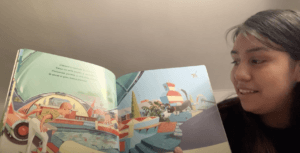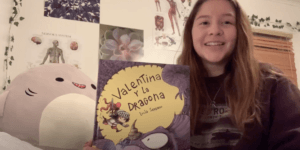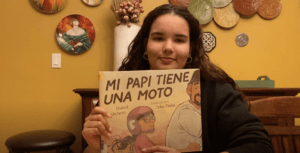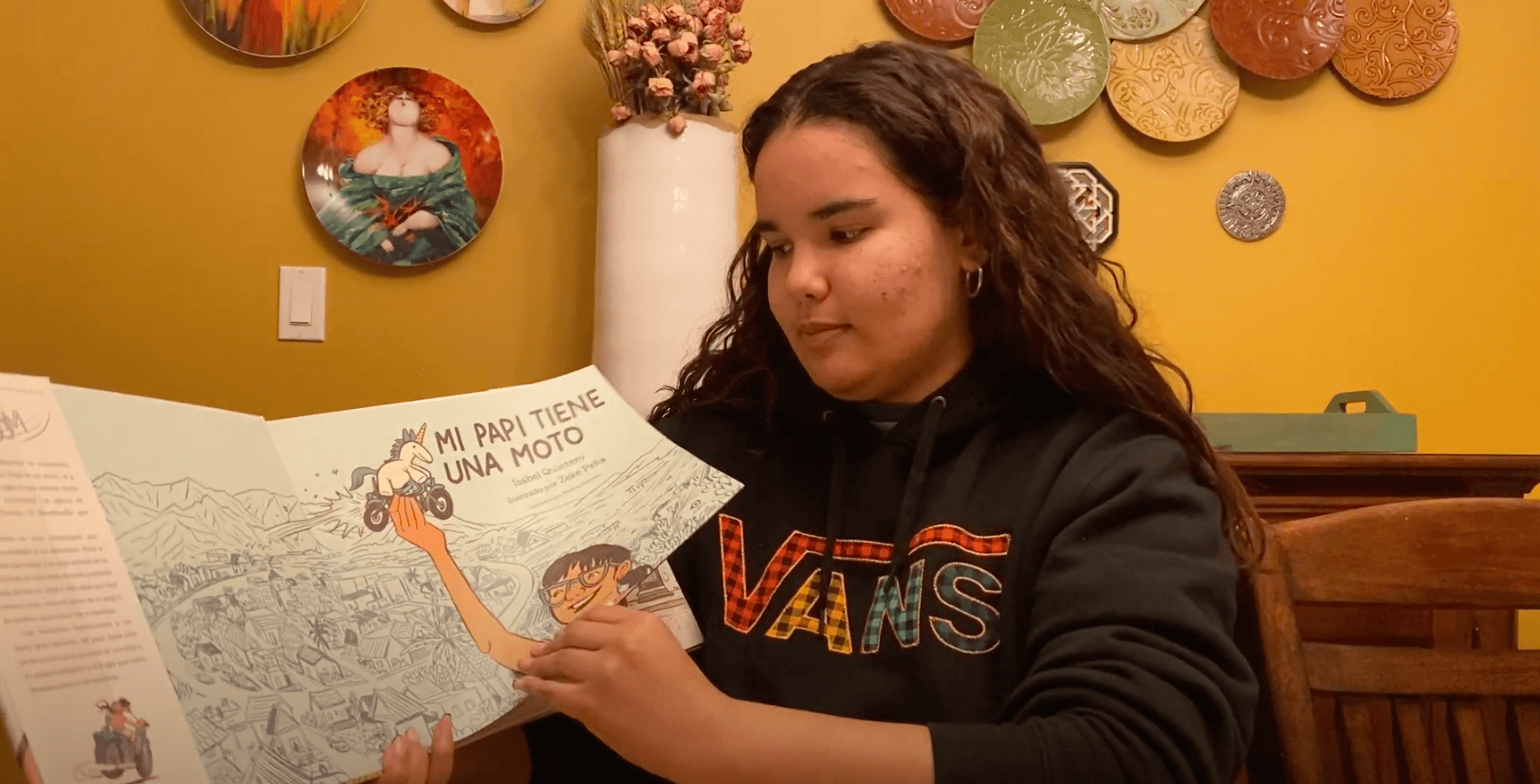According to Alison Maginn, Ph.D., associate professor in the Department of World Languages and Cultures, service-learning and community engagement (SLCE) is a counter normative mode of teaching and learning that is “messy” by nature. Even with her years of experience with SLCE developed through Monmouth’s study abroad program at the University of Cádiz-Andalucía, in Cadiz, Spain, Maginn says “engaging in service learning during a pandemic brought the complexities of this pedagogy and practice to a whole new level.” Throughout the fall semester, Maginn integrated SLCE into her third-year course FS300A, Advanced Spanish Conversation and Oral Discourse, meeting in a hybrid format both face-to-face and online.
Until this semester, Maginn and her students engaged with community organizations in Asbury Park and Long Branch through reciprocal and co-creative relationships with community members and partners, in a bilingual dynamic of English and Spanish. “Given the growing immigrant populations of both towns, potential allyship and co-constructed programming in Spanish have become increasingly significant and sought after,” Maginn said. By the summer of 2020, however, Maginn said it became clear that a planned service project with Long Branch Free Public Library in bilingual storytelling and intercultural mentoring would not be able to proceed as usual.
The Children’s Librarian, Nekesha Marshall, with whom Maginn had developed a collaborative relationship, confirmed that the library would be closed to the public. At that point, Miss Nekesha, as she is known by her young patrons, suggested that Maginn’s students could help create much-needed content in Spanish, since all programming was going to be online. With patronage that is 80 percent Spanish speaking and 10 percent Portuguese speaking, it was crucial for the Long Branch Free Public Library to provide materials and services in these languages, but with the pandemic forcing the library to close, services in Spanish became limited.
Maginn saw an opportunity for collaboration and mutual enrichment: as part of their Spanish course on oral discourse, Monmouth students could choose a children’s book in Spanish from the Long Branch Free Public Library’s collection, practice reading and performing it in face-to-face and Zoom classes, and ideally improve their reading and oral presentation skills in Spanish while helping Miss Nekesha create online content for the parents and children who make good use of the library’s programs. As is often the case with SLCE, there were intended and unintended outcomes. Monmouth students did indeed practice their reading skills, vocabulary building, and reading out loud in Spanish, itself a difficult skill to master, but, Maginn said, “so much more learning also took place.”
“Through oral and written critical reflection, students documented learning and growth across an array of areas,” Maginn said, in part because the books themselves were rich in linguistic and cultural content. “Think of how many animals and magical creatures appear in children’s stories, not to mention the importance of word-play, rhyme, rhythm, and dramatic effect,” Maginn said, citing examples like Siempre, siempre te querré, Insectos, the Llama Llama books, and the No lleves tu dragón books.
Maginn said that some of the stories selected for the program were translations of famous children’s books in English from the likes of Dr. Seuss, where the rhyme, rhythm, and humor had to come across in Spanish just as in English (see Tengo un molillo en mi bolsillo), while other selections were from Hispanic authors with Hispanic illustrators, so the content was not only linguistically rich but also culturally specific and sensitive (see Mi papá tiene una moto, Una bicicleta como la de Sergio, Valentina y la dragona and Arroz con leche).
Maginn also cited the physical and technical issues that came into play for her students: how to film, how to light, and how to hold the book and read at the same time. “Students were using their phones to record themselves without the benefit of professional equipment,” Maginn said. “One student, Gabriella Cleven, had a technique, which became known to the class as the ‘Gabriella method:’ filming the book from above, using a laptop stand she already had.”
Before the stories were ready to send to the library, students had to practice many times in class and alone, doing various linguistic exercises and vocal acrobatics, at times in front of a mirror so that they could get their tongues around some of the difficult words and breathe through the correct phrasing and sound sequences. Maginn credits Monmouth’s online classes through Zoom with providing advantages that are not available in face-to-face class meetings where masking and distancing made it impossible for the professor and students to see one another’s mouths.
Using Zoom, Maginn could clearly model and check vocal exercises and pronunciation, and everyone could see, for example, how the intervocalic ‘d’ in Spanish has to be produced with the tongue between the teeth.
“One of the most gratifying aspects of the project for me, our students, and the library is that the final product is culturally rich, civically engaged, and fun for the whole community,” Maginn said. “Some of these students are Spanish majors, but most are Spanish minors, majoring in a range of disciplines including business, biology, chemistry, education, English, health studies, nursing, social work, political science and psychology.”
Maginn also encourages members of the Monmouth community to avail themselves of the stories for their own enrichment and enjoyment and for the children in their lives. “The younger the child, the less they will question the language of the story,” Maginn said. She also said that some of the stories, such as ¿Dónde está Oso?, Manta de amor, Siempre, siempre te querré and similarly titled Siempre te querré, are ideal for very young children, while others are suited to children above three years old, including Buenas noches construcción, Las dos Olivias, Las zanahorias maléficas and Si yo diseñara un auto.
The stories are available via a link on the webpage of Long Branch Free Public Library (“Listen to our storytimes in Spanish”), or on the library’s YouTube page.




